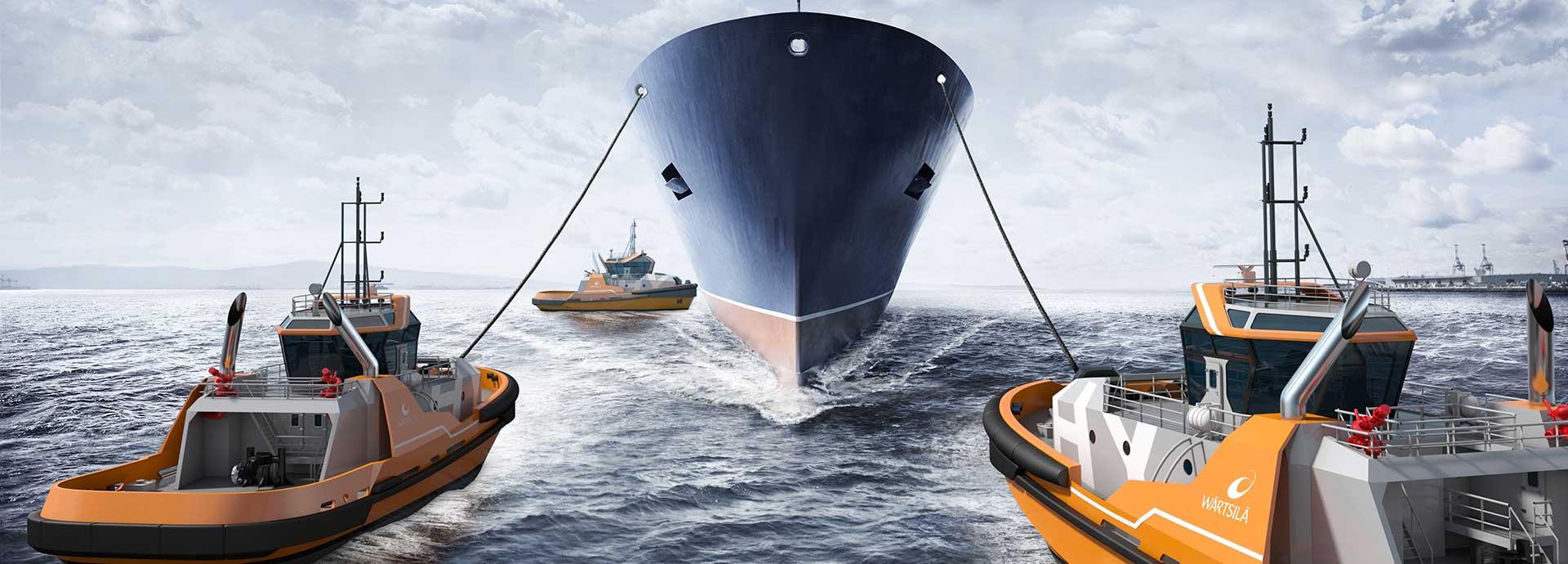

Having a green image and complying with stricter environmental standards are big and important trends in China. In the harbour towing and escort world, Wärtsilä's HY Tug concept is a perfect fit.
Officially launched at trade fairs in Singapore (September 2017) and in China (December 2017), the Wärtsilä HY Tug is a new type of hybrid tugboat based on Wärtsilä HY technology that uses a power combination of mechanical engines and electric batteries for its operational needs. It particularly suits the Chinese market, one of the biggest in the world, because it offers increased operational efficiency, lower fuel consumption, reduced emissions, and improved performance compared to traditional tugboats.
Is the Chinese market ready for hybrid?
The big announcement at the Marintec Fair in Shanghai in December 2017 was that the Wärtsilä HYTug design had received an Approval-in-Principle recognition by the China Classification Society (CCS), an important confidence-building step for potential Chinese customers with this new hybrid technology. HY technology is currently used in other marine sectors.
“Our focus now is to team up with tugboat builders in China and abroad to promote the Wärtsilä HY technology and the interest is strong all over,” says David Xu, Sales Manager, Wärtsilä Ship Design Singapore who is responsible for the China market.
According to Tug Technology & Business magazine, there are approximately 18,000 tugs in use worldwide. “But the total market for new tugs is about 300 per year,” continues Xu. “This is a stable and sizeable, yet niche, market of which the Chinese market is about 50 new units, annually.”
In principle, tugboat operations are identical around the world. What makes the Chinese market different however, and this is taken into consideration in future tugboat designs, are the socio-economic differences between Asia and Europe, for example.
“A Chinese tugboat would typically have a bigger (10-14 people) crew and more cabins compared to a European one (6-8 people) because the crew tends to spend up to two weeks aboard and thus need more living and crew quarters,” says Xu, explaining one important design difference between Chinese and other tugboats.
Zero emissions
Wärtsilä HY technology combines engines, an energy storage system using batteries, and power electronics optimised to work together through a newly developed energy management system. The Wärtsilä HYTugs have been designed in close co-operation with the ABS, BV, Lloyds Register classification societies, and are now also approved by the CCS in China.
The Wärtsila HYTug design is available in three different hull sizes, namely a 28m harbour tug, a 29.5m harbour tug, and a 35m escort tug. A bollard pull range of 40-90 tons can be covered with the appropriate Wärtsilä equipment modules. The propulsion configuration is such that each design comes with the option to select either diesel mechanical hybrid, or diesel electric hybrid propulsion.
A tug typically operates in, or close to, harbours and is particularly liable to environmental regulations. The need for compliance is an increasing concern for harbour towage and escort operators. Battery technology can mean a lot for a tug which typically stands idle most of the time before hooking up to a ship.
“Low-load operations can be performed by batteries with zero emissions,” says Ay Hwa Ngoh, Sales Manager, Naval Architect, Wärtsilä Ship Design Singapore, explaining the economic argument for the Wärtsilä HYTug. “Having battery power also means that one can reduce the installed mechanical power because the max bollard pulls only account for about 1-2 percent of a tug’s annual operations, and the batteries, in combination with the engines, can be used to boost up the power when necessary.”
Hybrid savings
In addition to not needing much bigger engines to achieve the same bollard pulling power, a battery hybrid system offers other savings in the form of less maintenance costs due to lesser engine running hours and less lube oil consumption, lower fuel consumption and less exhaust.
“We believe China is on the cusp of implementing hybrid battery technology on many fronts including tugboats,” says Ngoh.


